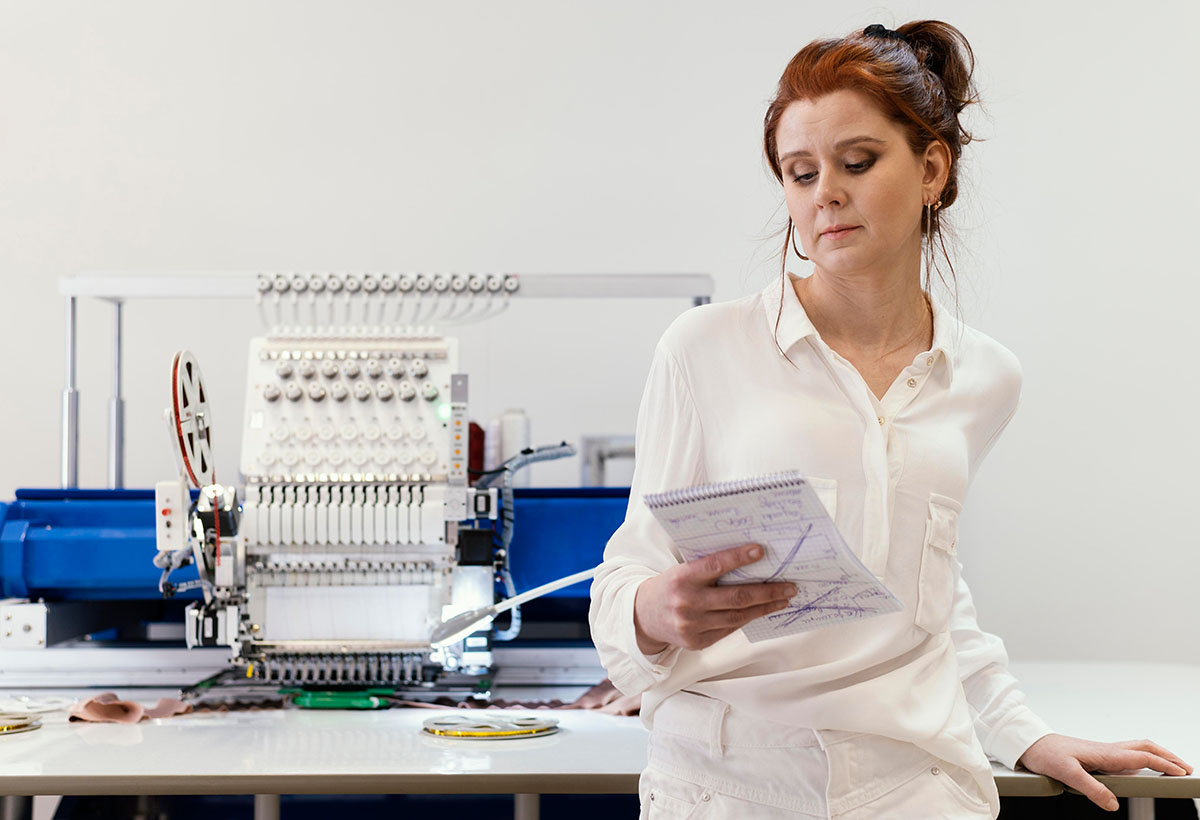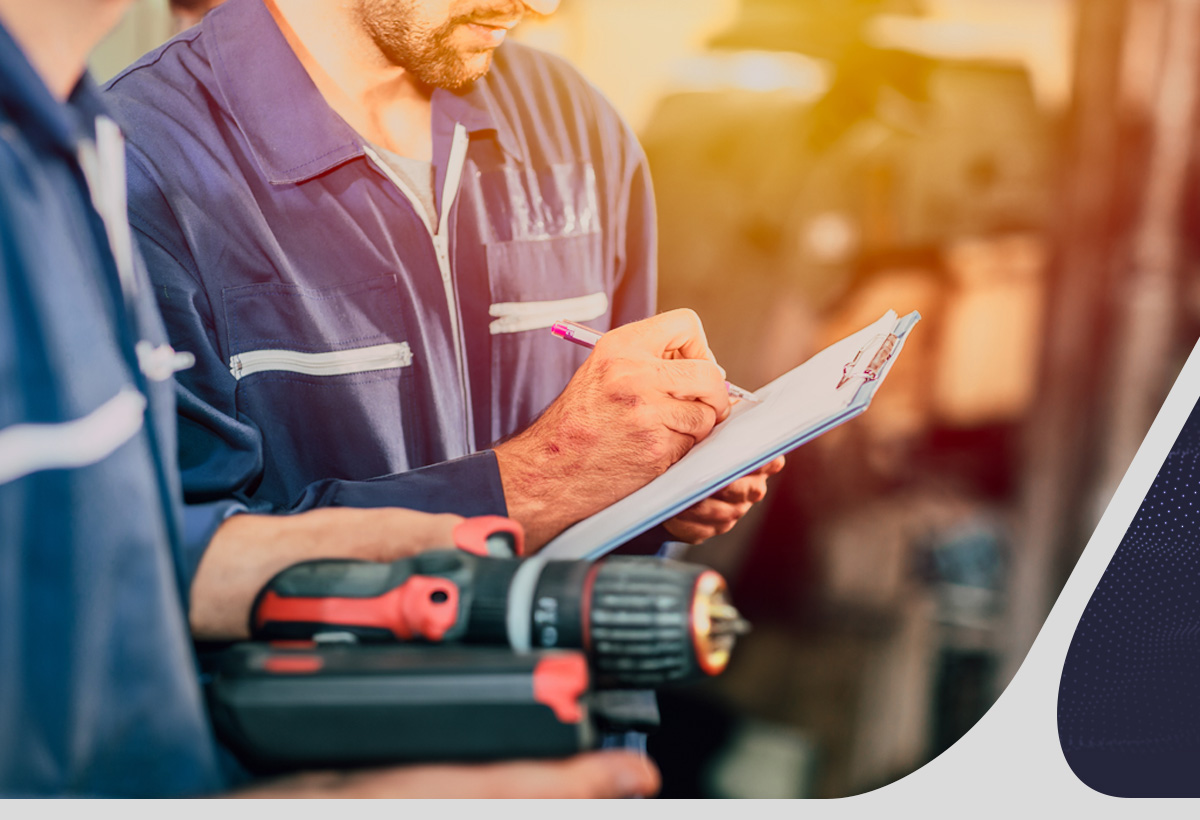Maintenance indicators are extremely important for asset management! They help optimize industry performance and the useful life of machinery.
In this article, you’ll see some of them and at the end you’ll find a free infographic with the complete list. So read on to resolve your doubts about this topic once and for all.
Let’s go?
Why monitor maintenance indicators?
Maintenance indicators are strategic tools for the textile industry. They help analyze the availability and quality of an industry’s main assets: machinery.
They are therefore crucial to ensuring efficiency and reliability of an organization’s operations. By monitoring these metrics, companies can:
- Identify trends;
- Anticipate mechanical problems;
- Optimize the maintenance schedule and calendar;
- Reduce operating costs;
- Maximize the useful life of equipment.
In addition, monitoring maintenance indicators enables better asset management, resulting in greater equipment availability.
Por consequência, gera uma maior produtividade da empresa.
Therefore, monitoring them is essential for the effective management of resources and, of course, for ensuring the smooth running of an organization.
Indicators as valuable data for strategic decision-making
In other words, according to an articleIndicators are measures or numerical data established according to the processes you want to control. And it is precisely these rates that contribute to the quantification and analysis of operations.
Aqui, a subjetividade e o “achismo” ficam de fora!
Metrics, in addition to helping with necessary corrections, are key data for management decision-making.
E as melhores práticas de manutenção, juntamente com essas ferramentas, promovem redução nos custos de produção ou serviços.
However, for this to happen, maintenance needs to be aware of:
- Importance of your role;
- The organization’s needs;
- Performance of this activity in competitors.
This information helps define the key indicators for analysis.
Aqui, são estipuladas metas alcançáveis que, por sua vez, são compartilhadas com toda a indústria.
In conclusion, they help to manage industrial maintenance activities effectively, aligning them with the textile industry’s strategic objectives.
Além disso, ajudam a:
- Prevent failures;
- Reduce costs;
- Increase the useful life of equipment;
- Improve productivity;
- Promoting safety in the workplace.
Learn about the main maintenance indicators

As we have seen, monitoring maintenance indicators is an essential action to guarantee availability, reliability and safety of the company’s assets. As well as operational efficiency and cost reduction in the long term.
However, it is important to note that choosing which rates to evaluate is not always an easy task. Ideally, they should help monitor the performance of processes and be definitive for analyzing the achievement of targets.
In other words, quantity is not synonymous with quality! Quite the opposite! It is recommended to monitor a few indicators so that the study is effective on all of them.
With this in mind, we’ve listed some of the main maintenance metrics. See the list below!
1. Tempo médio entre falhas (MTBF)
Mean Time Between Failures is the indicator responsible for calculating the average time between failures.
Ele quantifica a confiabilidade da machine by demonstrating the period in which it usually operates correctly without faults.
Its analysis contributes to correct quality control and equipment performance. Therefore, the higher the MTBF value, the greater the confidence in the machinery.
It is worth noting that it is usually expressed in units of time. That is, hours, days, months or years. To calculate it, just follow the formula:
MTBF = sum of hours of good operation / number of stops for corrective maintenance.
2. Mean Time To Repair (MTTR)
Mean Time To Repair, on the other hand, is the measurement of the average time taken for each repair after a failure.
Aqui, ao contrário do anterior, o resultado precisa ser o menor possível.
After all, this will demonstrate that actions to restore normal operating conditions are taking place quickly. Minimizing this, downtime and ensuring the availability of textile machinery.
MTTR is therefore important for assessing the efficiency of the maintenance process. And in order to monitor it, it is necessary to
MTTR = sum of repair times / total number of interventions carried out.
3. Overall Equipment Effectiveness (OEE)
Overall Equipment Effectiveness is another of the essential maintenance indicators for productivity in the textile industry.
Ele mensura a overall equipment efficiency. With OEE it is possible to understand how often the textile machine is available for operation. In addition, it allows you to identify the production time and the quantity of products developed in suitable conditions for sale (no scrap).The OEE calculation is:
OEE = Availability x Performance x Quality
should be noted that:
- Availability = (time producing / time programmed to produce) x 100;
- Performance% = (actual production quantity / theoretical production quantity) x 100;
- Quality% = (quantity of good / total quantity produced) x 100.
4. Maintenance Cost over Turnover (CMF)
The Maintenance Cost Over Billing is indispensable for the correct financial management of the textile industry.
Este indicador de manutenção mostra a proporção dos gastos quanto às intervenções realizadas no maquinário em relação ao faturamento total.
It is therefore possible to analyze the efficiency of the maintenance sector and the impact of these actions on the industry’s profitability.
Por isso, aqui, um CMF alto indica um valor elevado, se comparado com a concorrência.
For your study, you should calculate:
CMF = total maintenance cost / gross turnover x 100.
5. Reliability
Finally, the Reliability indicator assesses the efficiency of maintenance actions of the equipment. In other words, it provides information on a machine’s ability to operate at stable and predictable over time.
To do this, it takes into account the MTBF and MTTR results, as well as the failure and availability rates. The calculation is made using the formula:
Reliability = R(t) = e (raised to λ.t). Where:
- λ: failure rate = 1/MTBF;
- t: time (must follow the same unit of measurement as MTBF);
- e: Euler’s number, which is 2.7182.
Keep digging! Access the free infographic!
Constant monitoring of maintenance indicators ensures asset performanceand identifying points for improvement. This analysis helps plan strategies to guarantee the reliability and availability of equipment.
Not to mention that these tools also help with decision-making, the development of an efficient maintenance schedule and the efficient allocation of resources.
So keep delving into the subject! Access our free infographic and discover the 9 main indicators that will help you optimize textile production.



